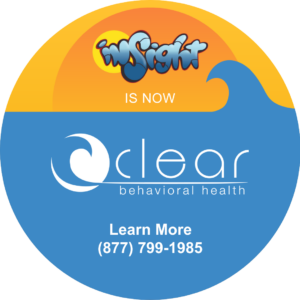Substance use treatment has grown and changed significantly from its roots in the peer-treatment/self help models. In addition, the sober homes of the mid-to-late twentieth century. In the earliest days of the field, addiction treatment was seen as something that would require years of hard work. It would also require isolation from one’s “past life” as an addict. Recovery came with an expectation of at least a year spent away from friends, family, and loved ones. Today it mostly focuses closer to a “30 Days Clean” model.
However, as substance use treatment evolves from its roots in the self-help tradition, treatment times, particularly for “inpatient” type treatments (where someone lives at the treatment center), are getting shorter and shorter. While shorter treatment times can be less disruptive for those struggling with addiction, it would be dangerous to think that addiction treatment no longer requires years of hard and focused work to maintain a successful recovery.
Feeling Better is Not Getting Better
As inpatient treatment moves more into the mainstream and is covered by health insurance companies, the conversation around inpatient treatment stays shifts from “years” or “months” of treatment to “days” and maybe “weeks” of treatment. I’ve treated patients that were only approved for 5 days of treatment in a residential environment! While I think most people don’t expect to see transformational life change in just 5 days, sometimes people can feel like 30 days was enough to change their lives. Since they are feeling better after 30 days, and maybe insurance coverage is running out, it’s tempting to think that treatment has “worked” and that “they’re finished.” While you might be feeling better, treatment and recovery is far from finished.
As a therapist, I think of the first four or so weeks that I see a client as the “assessment phase.” In this phase of treatment, the client and I are working together to get to know each other. We resolve the immediate crises in their life, and set treatment goals. This typically comes around the 30-day mark of therapy—around 4 to 5 sessions. This time can be shortened somewhat by meeting two or even three times a week. But, there are limits to how condensed this phase can be. If I meet with a client every day, but they have not had an opportunity to practice any of the skills we reviewed or think upon some of the questions that were asked, there is only so much that we can talk about in that session. I will have a difficult time asking “how have you been managing your cravings?” To a client that I saw perhaps 18 hours ago—they may not have even had enough time to have a craving to practice coping with!
Why 30 Day Treatment Doesn’t Work
What typically does happen around the 30 days clean mark of treatment (for someone who has been actively participating in a program and in therapy) is some initial symptom abatement. Cravings typically hit their worst point after the third week of stopping use. After which they begin decreasing in intensity. A therapist or a combination of behavioral health professionals have likely been working with a client to help talk through the things that have been putting stress/pressure on the client. So, things start to seem like they are calming down and that there is a clear path forward and out of addiction.
As a therapist, I’m quite happy when clients make it to this point. It means they are starting to see a future without substances and are bringing order to the chaotic things that defined their life. We are cleaning up the mess! However, since the focus has been on just the immediate problems, the client and I have yet to understand the things that they do (aware or unaware) that have caused these problems presently. This is the “deep work” of therapy. Clearing the immediate crises begins to give us a glance into the things going on “behind the scenes”. Those things perpetuate the cycle of chaotic living and substance abuse. As much as therapist and client alike may wish that this process could be accelerated, there is simply no way to accelerate the building of trust that needs to happen between client and therapist that gives insight into the “deeper” issues.
Having A Plan After Treatment is Paramount
Leaving treatment before we get to explore that space means that, no matter who the client goes to for therapy in the future, their therapist will have to spend a significant amount of time processing some of the new information. Now, by this point, a good deal of time will have been spent creating a plan for them to move forward. Also, to change therapists mid-plan would be like starting the “getting to know you” process over and might set the overall targets of treatment back several weeks. Instead, by continuing in treatment past 30 days, the therapist could explore not only what you have said during the treatment process, but also perhaps wasn’t said or isn’t seen that’s holding up the client’s journey for recovery.
While there are some good things that may come out of being 30 days clean during a treatment episode (like getting used to a process or program that brings some stability in your life), the bad things seem to outweigh the good. It takes about three weeks to form new habits and routines, so, yes, the client will have been able to build some stability and routine in their life—and just as they build it, they move on from the treatment center and ruin that routine (a risk factor for relapse) at a very critical time. If the team of peers and professionals that are providing them treatment are not available in the way which they might need, then, again, they are in a risky spot for relapse. As efficient as a 30 day treatment program might be on paper, there is a stronger connection with a professional that only comes over time, and that process of connecting cannot be rushed.
Treatment Isn’t Forever, Smart Choices Can Be
All said, depending on your ability to pay, the client may or may not have an option to stay in substance use treatment for more than 2-4 weeks. If they are able to continue work with their therapist and care team, then we would encourage them to do so, even if it may cost a bit extra. However, we also recognize the reality of the situation—that many people may not be able to “self pay” a bed at a residential treatment facility. If that is the case, it would be wise to continue to seek treatment/help in an outpatient setting—the deeper exploration of the factors underlying the client’s specific addiction is something that should occur no matter what treatment setting they are in.
However, they should be prepared for the work to be even harder than it would be had they stayed in the residential treatment environment—they have to maintain sobriety all while finding their footing in an environment that facilitated their substance use in the first place. It can (and will be) done, but treatment, even when pursued from one’home/school/work context will be significantly more challenging (in an outpatient context), but likely worth the extra trouble.’
Being clean and sober for 30 days is an amazing accomplishment, but keep in mind the aspects spoken about above. Recovery is a journey and that journey requires continuous work. If you or a loved one are suffering from an addiction, don’t hesitate to contact us at Clear Behavioral Health and speak with one of our experienced addiction professionals.

